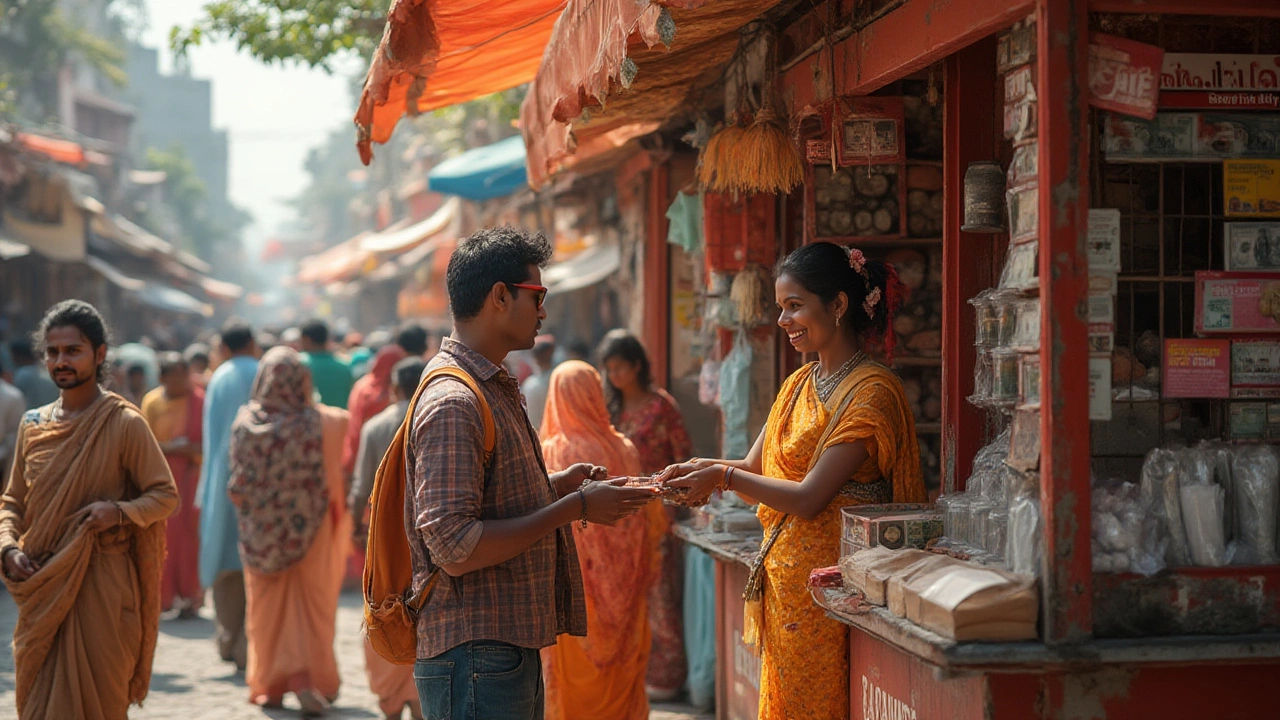
Get the latest on how much $1 US is worth in India, plus clever money tips for travelers. Learn exchange rates, where to exchange, card vs. cash, and local buying power.
When planning travel money India, the practice of handling cash, cards, and budgeting while touring the Indian subcontinent. Also known as India travel cash planning, it requires a mix of local currency, card access, and smart budgeting. Most travelers wonder: should I rely on cash or go fully digital? The answer lies in understanding a few key pieces. First, currency exchange, the service that converts foreign money into Indian rupees (INR) dictates how much you actually spend. Rates fluctuate daily, so tracking them before you leave can save you a noticeable chunk. Second, knowing where ATMs in India, bank machines that dispense Indian rupees are located helps you avoid costly last‑minute exchanges. Major cities and tourist hubs have plenty, but remote areas may rely on cash carried from earlier stops. Third, a solid travel budgeting, the process of estimating daily expenses and setting spending limits keeps surprise costs at bay. By allocating a daily cash envelope for street food, transport, and small purchases, you reduce the need for frequent withdrawals. Finally, understanding card usage, how debit and credit cards work with Indian merchants and banks lets you tap into global networks without hidden fees. Many Indian merchants accept Visa, Mastercard, and even contactless payments, but some still prefer cash for small transactions. Balancing these factors ensures you’re never stuck without money and that you keep fees low.
Travel money India encompasses both physical cash and digital options, and each has its own pros and cons. Cash gives you instant buying power in markets, small eateries, and rural transport, but it also means you have to carry it safely. A good rule of thumb is to exchange enough for the first two days, then use ATMs to top up as needed. ATMs usually give the best rates because banks apply the interbank forex rate plus a modest surcharge; avoid private exchangers that add hidden commissions. When you pull cash, always choose the “INR” option on the screen to let the bank handle the conversion—selecting “foreign currency” often adds an extra markup. For card users, inform your bank about your travel dates to prevent fraud blocks, and ask about overseas transaction fees. Some cards waive these fees entirely, which can be a big saving over a month‑long trip. If you carry a credit card, use it for larger purchases like hotel bills or air tickets; you’ll earn points and enjoy stronger consumer protection. Meanwhile, a debit card linked to a no‑fee checking account works well for everyday withdrawals. Keep a digital copy of your passport and bank contact numbers on your phone; emergencies happen, and having that info handy speeds up support.
Now that you’ve got the basics of cash, exchange, ATMs, budgeting, and card usage, you’re ready to dive deeper. Below you’ll find a curated collection of articles that break down each piece in detail—whether you need a step‑by‑step guide to finding the best exchange rate, tips on staying safe with your money on the road, or advice on planning a budget that lets you enjoy India without breaking the bank. Explore the posts to turn these guidelines into a smooth, worry‑free travel money plan for your next Indian adventure.

Get the latest on how much $1 US is worth in India, plus clever money tips for travelers. Learn exchange rates, where to exchange, card vs. cash, and local buying power.